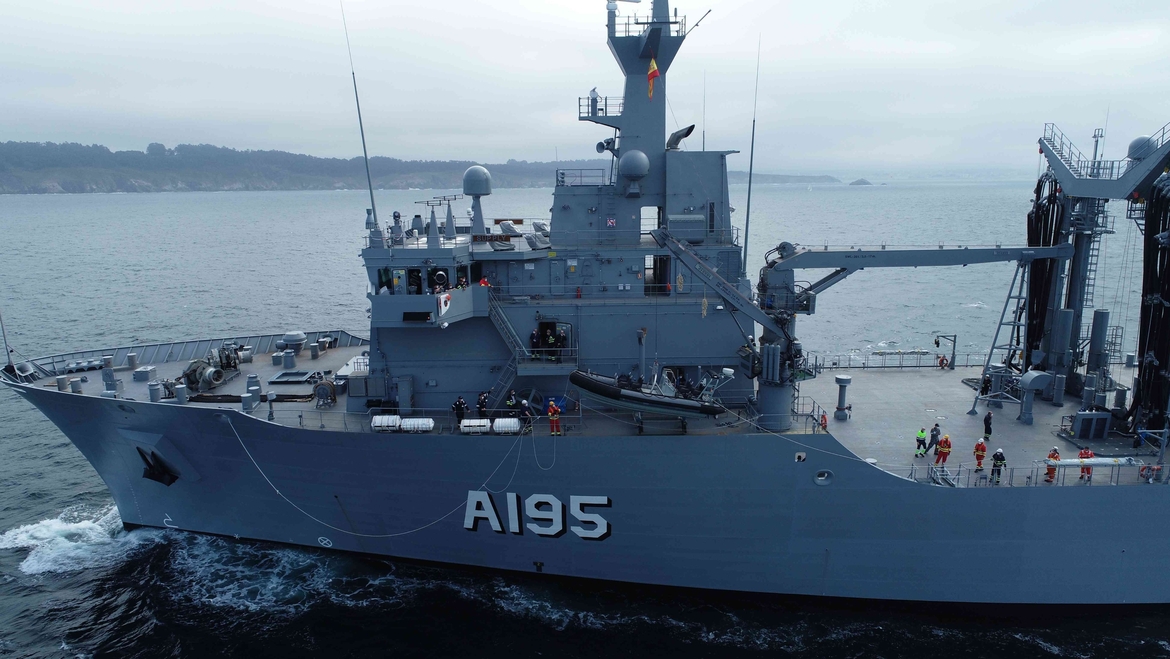In a post released to corporate social media channels, Spanish state-owned shipbuilder Navantia has revealed that the RAN's new auxiliary oiler replenishment ship has completed sea trials off the Galician coast.
On 10 August 2020, a release made to the company's Twitter channel stated that the NUSHIP Supply auxiliary oiler replenishment (AOR) ship completed her sea acceptance trials ahead of sailing from the Spanish port city of Ferrol to Australia later this month for her Australian fit-out.
The sea trials lasted three days and two nights and included testing of the RHIB davit and a Dry-hookup with the Spanish Navy’s AOR, SPS Cantabria.
The vessel sailed with a crew of 135 on-board comprised of a mix of Navantia and Royal Australian Navy personnel.
The arrival of the AOR Supply also brings the commencement of a five-year sustainment contract, primed by Navantia Australia, which will generate more opportunities for Australian companies to join Navantia’s global supply chain and create jobs for Australian workers.
Based on the Spanish Navy's Cantabria Class vessel, the new AORs will replace Durance class HMA Ships Success and Sirius.
The ships are intended to carry fuel, dry cargo, water, food, ammunition, equipment and spare parts to provide operational support for the deployed naval or combat forces operating far from the port on the high seas for longer periods.
Two Supply Class AORs will be named HMA Ships Supply (II) and Stalwart (III) once commissioned. The lead ship, Supply, was laid down on 18 November 2017 and then launched at the Navantia Shipyards in Ferrol, Spain, on 24 November 2018.
The following day, in accordance with ship building tradition the Chief of Navy, Vice Admiral Michael Noonan, positioned a coin under where the hull will be constructed for Stalwart.
In addition to replenishment, the vessels can be used to combat against environmental pollution at sea, provide logistics support for the armed forces, and to support humanitarian and disaster relief operations following a natural disaster.






